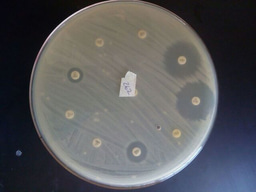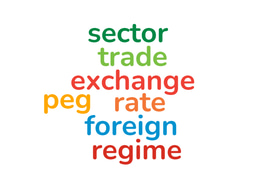In pursuit of uncovering hidden wildlife trafficking hotspots
Published in Social Sciences, Earth & Environment, and Mathematical & Computational Engineering Applications

As scientists, we hear from decision-makers and conservation actors that illegal wildlife supply chains are not one size fits all; some products seem to flow through extensive webs, and others are locked into bottlenecks. We hear how important it is to diagnose the chain before acting, and how mapping the structures of the illegal wildlife trade (IWT) is a prerequisite for choosing the right mix of enforcement, market, or community-based interventions.
We were inspired by the challenge of so much of the IWT being “unseen.” What we do know comes from documented seizures, which are incidents of wildlife trafficking where authorities catch the traffickers in the act and report it to a global agency such as the United Nations Office on Drugs and Crime or TRAFFIC. But what about the incidents that go undetected or are never reported? Our team set out to uncover information about these undetected incidents, particularly those that take place on the airline flight network, in an attempt to provide decision makers with a more complete picture on wildlife trafficking that can be used to make better-informed decisions on combating wildlife crime. We knew we needed to both decode the reported data in order to make it useful and then encode it to make it usable elsewhere, because IWT-related data crosses so many boundaries.
Decoding the data
The biggest hurdle was decoding the data. If seizures were documented at all, the records were often incomplete and biased, as some countries report incidents more than others and have different requirements regarding the extent of information they must report. To obtain the clearest picture possible, we combined two of the largest open-access datasets on wildlife trade occurring within the airline flight network. When examining the airports implicated in this combined dataset, we found what many others have already confirmed: that airports in Africa and Asia are the most dominant source and destination regions, respectively. However, beneath the surface, we discovered that the network is far more complex. We found this exciting because these insights go beyond the depth of existing IWT-related studies, meaning we could advance beyond the current practice in combating the IWT. To advance beyond the current practice of simply mapping IWT incidents by location, we turned to network science and machine learning. Specifically, we asked the following questions: What makes an airport more vulnerable to wildlife trafficking? And where might trafficking be occurring under the radar?
Understanding the connectivity of airports
To help answer these questions, we first calculated each airport’s centrality, which measures how connected an airport is to other airports. We hypothesized that an airport’s centrality in the full flight network could give us clues into its role in the illegal wildlife trade network. Our results revealed that airports with high degree and betweenness centrality in the global flight network are more likely to be involved in IWT. This was an exciting development, as it empowered us to use features of airports in the global flight network to predict their involvement in IWT. This is important because there is much more data available on airports based on their characteristics in the full flight network than on the IWT network.
Predicting wildlife trafficking activity
To predict which airports are involved in IWT, we needed to gather features that could be predictive of IWT invovlement. Given the results of the centrality analysis, we utilized the degree and betweenness centrality of airports in the global flight network as features. We also gathered additional features related to the airports' location, the incidence of other crimes, and the level of counter-crime resilience measures in each geographic area. Using these features, we trained a machine learning model to predict which airports were involved in IWT. Our model achieved decent predictive performance, which was exciting from a basic science perspective for sure; the most significant outcome of our model was the practical insights it offers to those invested in combating IWT.
First, while high airport centrality was the most significant indicator of whether an airport was implicated in IWT, other features stood out. Factors such as weak governance and elevated rates of other environmental crimes also increase risk. Conversely, strong civil society and effective crime prevention measures made airports less likely to be involved. Second, our model flagged several airports as likely IWT hotspots-even though they had no recorded seizures, known as “false-positive” outputs of our predictive model. Some of the airports in which the model was over 95% confident, such as Shanghai Hongqiao in China and Dallas-Fort Worth International Airport in the United States, have since been linked to trafficking in news reports. This suggests that our approach can help spot hidden risks before they even appear in the global reporting databases.
Looking ahead
The process of identifying these “false-positive” airports and the subsequent results were some of the most exciting parts of this body of research. There has been a clear and persistent amount of communication in the wildlife trafficking community that most existing analyses are biased due to the limited data available. We are optimistic that our approach not only empowers decision makers to look at the historical data and make changes, but also that they can apply our methods in the future to continue adapting to the changing landscape of wildlife crime. By predicting where the illegal wildlife trade is most likely to occur and why certain locations are more prone to involvement, our work can assist law enforcement and policymakers in targeting their efforts more effectively. Instead of pursuing yesterday’s news and adopting reactive approaches, they can concentrate on tomorrow’s risks, potentially preventing trafficking before it occurs.
Follow the Topic
-
Nature Communications

An open access, multidisciplinary journal dedicated to publishing high-quality research in all areas of the biological, health, physical, chemical and Earth sciences.
Related Collections
With Collections, you can get published faster and increase your visibility.
Women's Health
Publishing Model: Hybrid
Deadline: Ongoing
Advances in neurodegenerative diseases
Publishing Model: Hybrid
Deadline: Mar 24, 2026



Please sign in or register for FREE
If you are a registered user on Research Communities by Springer Nature, please sign in